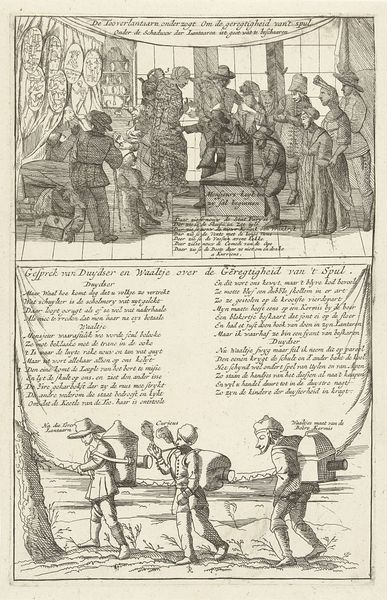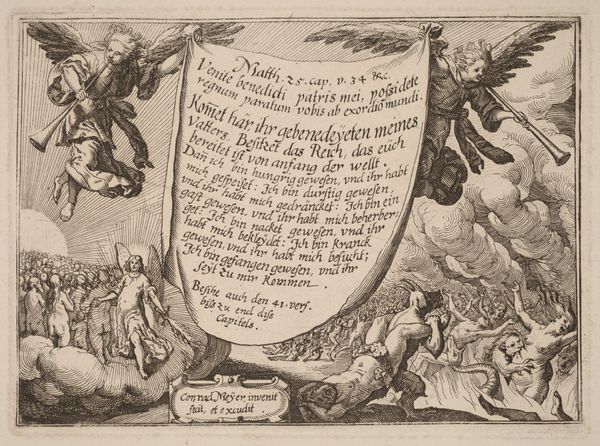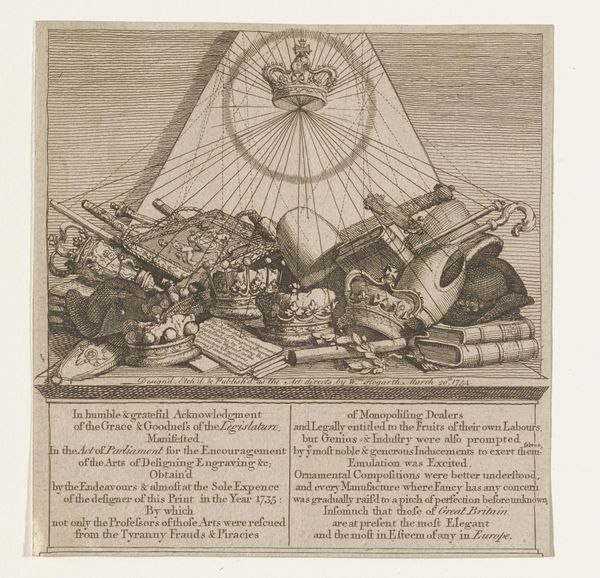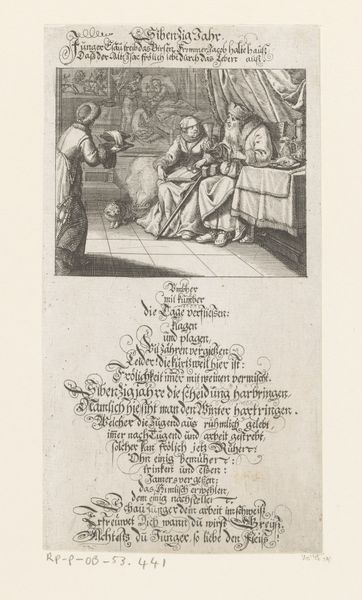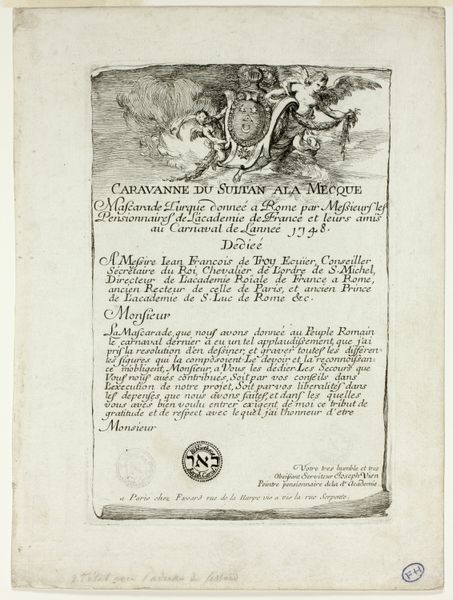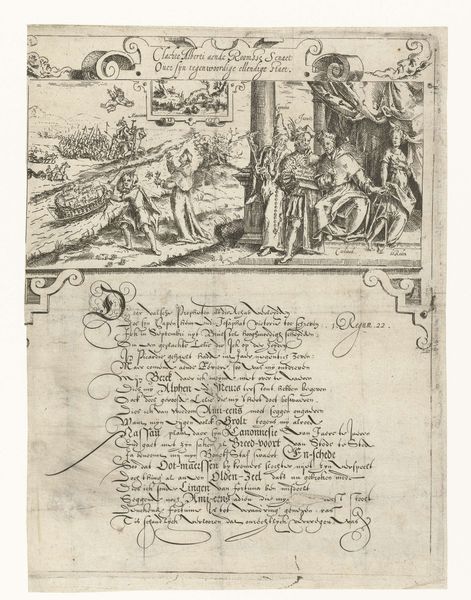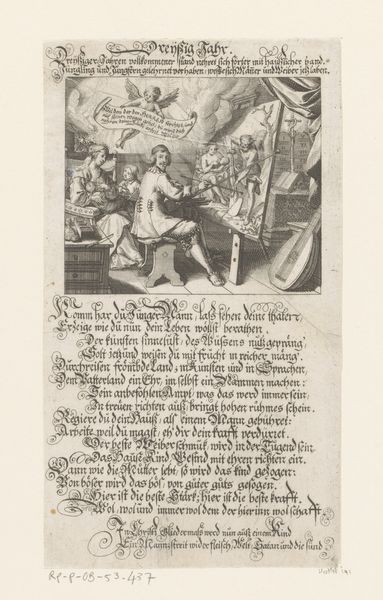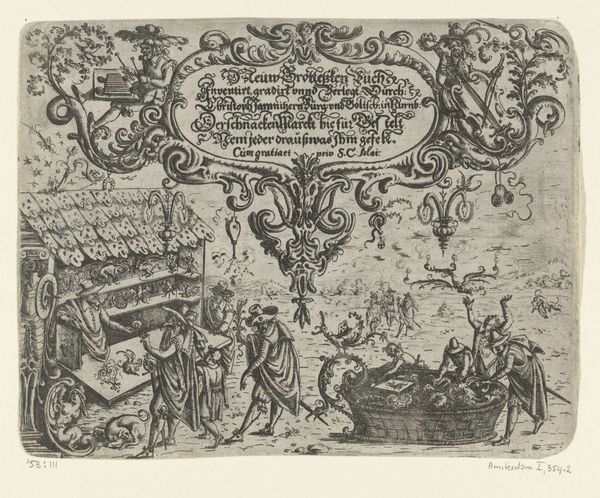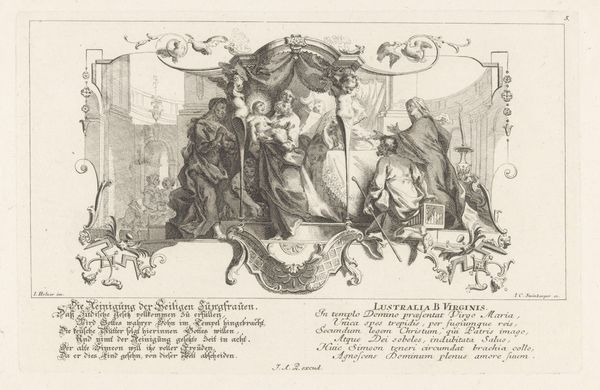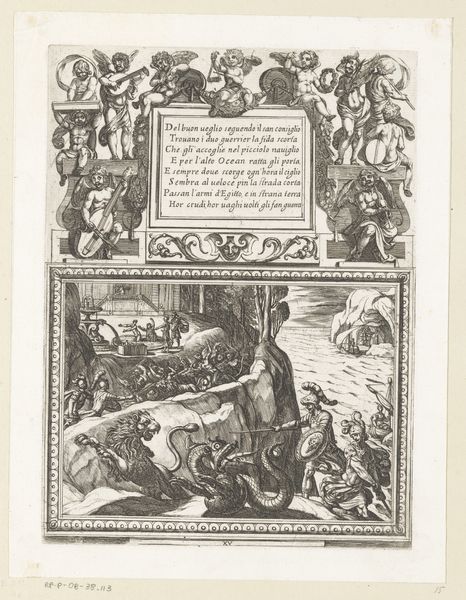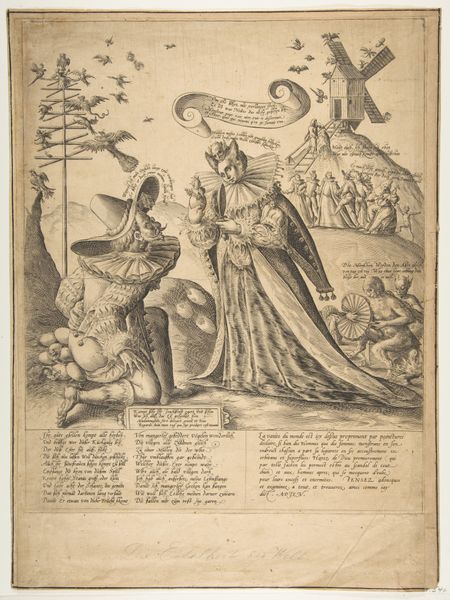
drawing, print, paper, ink, engraving
#
drawing
#
baroque
# print
#
landscape
#
paper
#
ink
#
history-painting
#
engraving
Dimensions: height 202 mm, width 170 mm
Copyright: Rijks Museum: Open Domain
Curator: Johann Heinrich Roos, a painter and printmaker of the Baroque era, produced this etching, "Titelprent met ruïne," circa 1668-1670. It's currently housed in the Rijksmuseum. What springs to mind for you when you see it? Editor: Okay, instantly, there's a kind of wistful, melancholic vibe. Like peering through time, maybe, at something lost but also...incredibly detailed. And textural! I can almost feel the rough stone and see the little sprig of green bravely pushing up through it. It's intimate and expansive at the same time. Curator: Absolutely. The ruin, I think, serves as a powerful symbol here. The inscription hints at dedications, loyalty, and perhaps even the fragility of reputation or societal structures. There's a strong sense of the transient nature of earthly accomplishments. Editor: Transient, yes! That's the perfect word. You've got this beautifully rendered text practically dissolving into this landscape of decay. The flourish of the calligraphy is incredible—so vibrant compared to the stillness of the ruins. The artist is speaking about time...what's sustained, what's lost... Curator: And consider Roos’s technique. The intricate cross-hatching brings a level of depth, highlighting the interplay between light and shadow. This contributes to the print's somber, contemplative mood, reflective of its Baroque sensibility. Editor: That light is almost dramatic, like a stage light isolating the old stonework. It’s asking us to dwell on the layers—not just in the stone, but in history and experience too. The composition—that millstone!—it anchors us to the past in a really grounding way. It’s amazing he created such dimension and perspective. Curator: It also gives us insight into seventeenth-century sensibilities, reflecting societal values around virtue, patronage, and artistic skill. It underscores how reputation and remembrance were meticulously cultivated and actively engaged with in this time. Editor: In just this one small picture there’s a world, maybe lots of worlds, colliding—the world that's ruined with the one that created it! I could honestly stare at this all day. Curator: It’s a poignant testament to the power of art to evoke reflection and provoke dialogue across centuries. Thank you for sharing your insights, it helped bring even more clarity to my understanding of it.
Comments
No comments
Be the first to comment and join the conversation on the ultimate creative platform.
